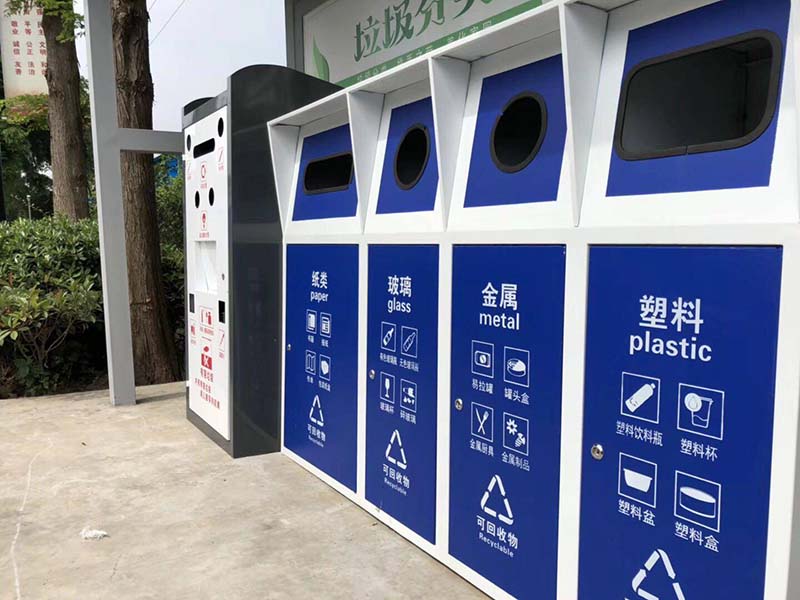Currently, the application of the Internet of Things is in full swing in many fields. With the continuous advancement of technology, the Internet of Things is gradually being used in environmental protection, energy management and other fields.
On July 1, the “Shanghai Domestic Waste Management Regulations” were officially implemented in Shanghai. This regulation marks that after more than 20 years of “garbage classification”, my country has finally truly incorporated “garbage classification” into the legal framework.
The people’s garbage classification “movement” is full of enthusiasm, and at the first site of garbage disposal, the integration of Internet of Things, cloud computing, and mobile Internet technologies has also brought new changes to trash cans.


Internet of Things Intelligent Garbage Classification and Recycling System
The “Internet of Things Intelligent Garbage Classification and Recycling System” has established a comprehensive and highly intelligent garbage classification management system through information technology. It operates and services three major hardware devices (intelligent garbage bag dispensing machine, intelligent garbage classification box, intelligent Garbage sorting and recyclable bins) Cloud service platform composed of mobile platforms.
1. Each resident can receive a biodegradable garbage bag with a QR code from the smart garbage bag distribution machine for free, one code per household.
2. Residents put garbage into smart garbage sorting bins. The new garbage classification and recycling machine can intelligently identify whether the garbage in the garbage bags is correctly classified. By installing a weight sensor in the trash can, the system automatically weighs the garbage after residents put in the garbage bags. Heavy data is automatically uploaded to the smart platform using the Internet of Things and stored in relevant household files.
3. Subsequent management and monitoring of garbage transportation collection, detection and reclassification, data analysis, processing, etc., to achieve accurate analysis of big data and provide scientific decision-making basis for the government to formulate subsequent management policies.
The “Internet of Things Intelligent Garbage Classification and Recycling System” realizes one code for each household, and each garbage bag has an “ID card” to transmit data through the Internet of Things intelligent terminal, supervise residents’ garbage classification behavior, and provide users with scientific garbage classification. There must be incentives to integrate garbage classification into residents’ lives.
Application of Internet of Things in Waste Disposal
The role of the Internet of Things in garbage classification and processing is based on the Internet of Things communication technology (NB-IoT) and sensor technology, combined with 3G/4G networks to develop a series of garbage processing equipment for data collection, control and other applications:
Intelligent trash can opening to prevent hand pinching
Open trash cans are easy to breed mosquitoes and have a strong smell that affects the environment. Therefore, most trash cans in residential areas have lids and doors. However, residents have some resistance to touching the trash cans with their hands when putting garbage out. An Internet of Things control device is installed on the opening of the trash can. Residents can open, deliver, and close the trash can through WeChat app or APP. This eliminates the need to touch the trash can and prevents hands from being pinched by the trash can.
Trash can status detector
The IoT monitoring equipment in the smart trash can can monitor the status of the trash can at any time. In addition to the overflow status, status information such as fire protection, waterproofing, tipping, and positioning can be monitored. By using the Internet of Things to transmit data, each trash can can be precisely managed to optimize resource utilization, achieve fire and explosion prevention monitoring, and provide big data support for trash can management in residential areas.
Garbage classification detection detector
Smart trash cans can capture beverage bottles, metals, batteries, glass and other garbage through cameras to achieve intelligent identification and early warning. The collected and detected data are transmitted to the smart platform through the Internet of Things and entered into each resident’s file for supervision. Garbage sorting behavior of each resident.
Garbage weighing calculation detector
The garbage weighing detector in the smart trash can automatically weighs the correctly classified garbage put in by residents, uses the IoT card to transmit data, and rewards residents with corresponding points in real time to encourage residents to classify garbage.
In addition to Shanghai, 46 cities will implement garbage classification in the future. In the context of national participation, “Internet of Things garbage classification” will face greater challenges.
With the development of 5G, the difficulty of data transmission decreases. If “Internet of Things garbage classification” can be more humane and intelligent to meet market demand, it will surely play a greater role after the storm passes.